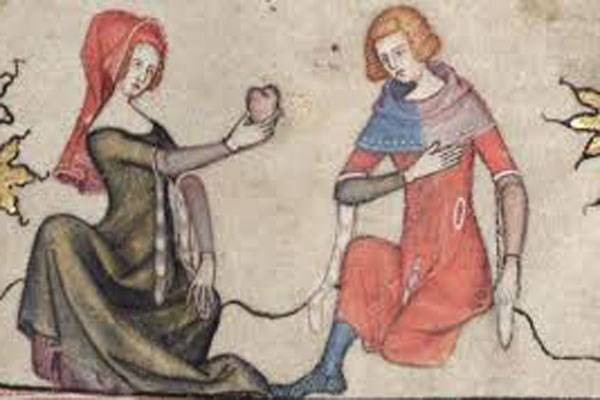Progress, Concerns Mark Sexual History

02/12/2015
By Sheila Eppolito
Human beings have been falling in love since the beginning of time, but the way they demonstrate their affection has been anything but constant.
Psychology Department Lecturer Mary Duell, who teaches Human Sexuality, is an expert on intimacy in relationships, and she shares some highlights from the timeline of human sexuality just in time for Valentine’s Day.
“In the Middle Ages, sex for any reason other than procreation was considered a sin, even sex between married couples,” says Duell.
Things got a bit better, she says, in the 1500s and 1600s with Martin Luther and the Protestant Reformation, when people agreed that sex between married couples, even without the goal of procreation, was acceptable.
“Of course, without any available birth control, this acceptance came with the price of unplanned children,” she says.
Fast forward to the late 1800s, and, Duell says, “Victorianism supported strange attitudes about intimacy, with the notion that women live their lives on a pedestal, while being told they should not enjoy sex.”
Then, in the early 1900s, the roots of what became the Sexual Revolution began to take hold, with significant attitude changes and freedoms for women.
“Many people refer to the creation of oral contraceptives as the milestone that began to really change society’s view of sex, but there were other important game changers,” she says.
“There was war in Europe, and attitudes were changing. Margaret Sanger, a nurse widely considered the mother of contraception, and the person who coined the term ‘birth control,’ was arrested for illegally distributing diaphragms and for opening the country’s first birth control clinic in Brooklyn.”
Sanger was making news and loosening attitudes about sex while giving women control over their bodies.
A host of important books and papers followed, including the Kinsey Reports, and the groundbreaking Masters and Johnson works. And then, the Pill.
In 1960, with the production of the first oral contraception, women could control their bodies — enjoying sex without pregnancy, determining if and when they wanted children.
Where are we now?
Certainly, conditions for sexual intimacy are better today than they were in the Middle Ages, especially for women. There is more acceptance, more openness and more personal control.
For students, Duell’s class helps frame the history of intimacy and provide context.
“It was a very interesting and informative class, and it really prevailed in shredding up a few of my biases,” says Thomas, a former student.
But it’s not all good.
Duell is concerned about the role gender still plays in the world, about the ongoing objectification of women (“Just look at the television, it’s right there.”) and, in particular, about a side effect of today’s “hook-up” culture.
The prevalence of casual, often anonymous sexual encounters can, Duell fears, do significant long-term harm to our ability to bond and to experience true intimacy.
“There are three major components to love: intimacy, caring and attachment,” she says, “and one major hormone.”
Oxytocin, often known as the “feel good” hormone, is critical to bonding in animals and humans. Released during and after sex and after childbirth, the hormone is directly related to successful bonding. If “relationships” end directly after sex, there is no bonding.
Duell says, “It is a necessary component for long-term bonding and nurturing. In studies, new mother rats who have had oxytocin blocked will not take care of their pups.”
Likewise, Duell fears the rise in casual sexual relationships among middle schoolers can also result in an inability to form the close, long-lasting and nurturing relationships that oxytocin is designed to help nourish.
Humans, like rats, need nurturing relationships for the survival of the species.
Looking ahead, Duell says, “While we are certainly not rats, a better understanding of hormonal, psychological, and socio-cultural factors that contribute to an understanding of intimacy and bonding is needed. Research efforts should focus on all three.”
Duell’s research includes discrimination learning in rodents, specifically the role of pheromones in learning and behavioral guidance, the role of the Internet in faculty/student communications and use of new technologies, such as iPads and other mobile devices, to improve student learning outcomes.
